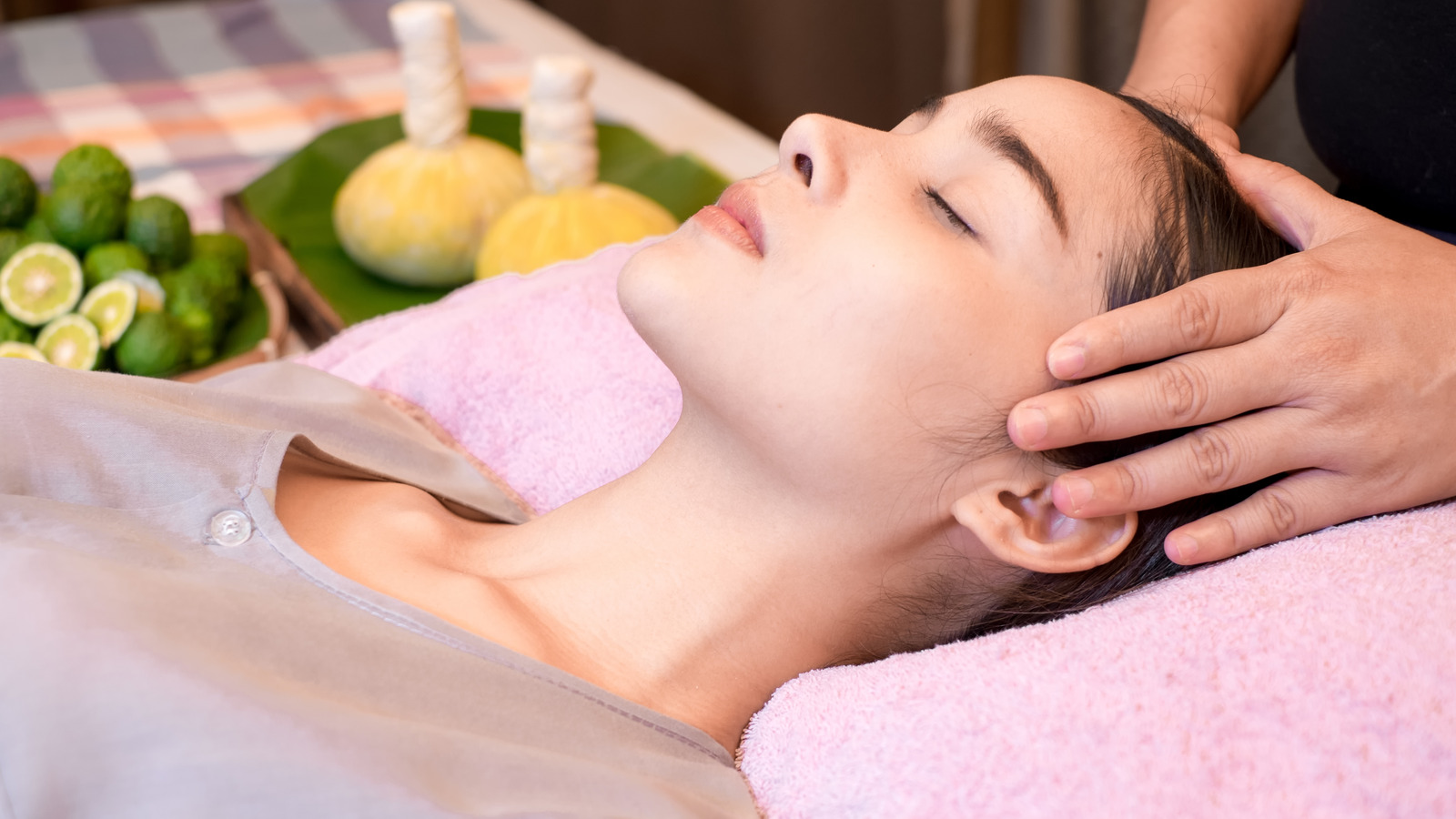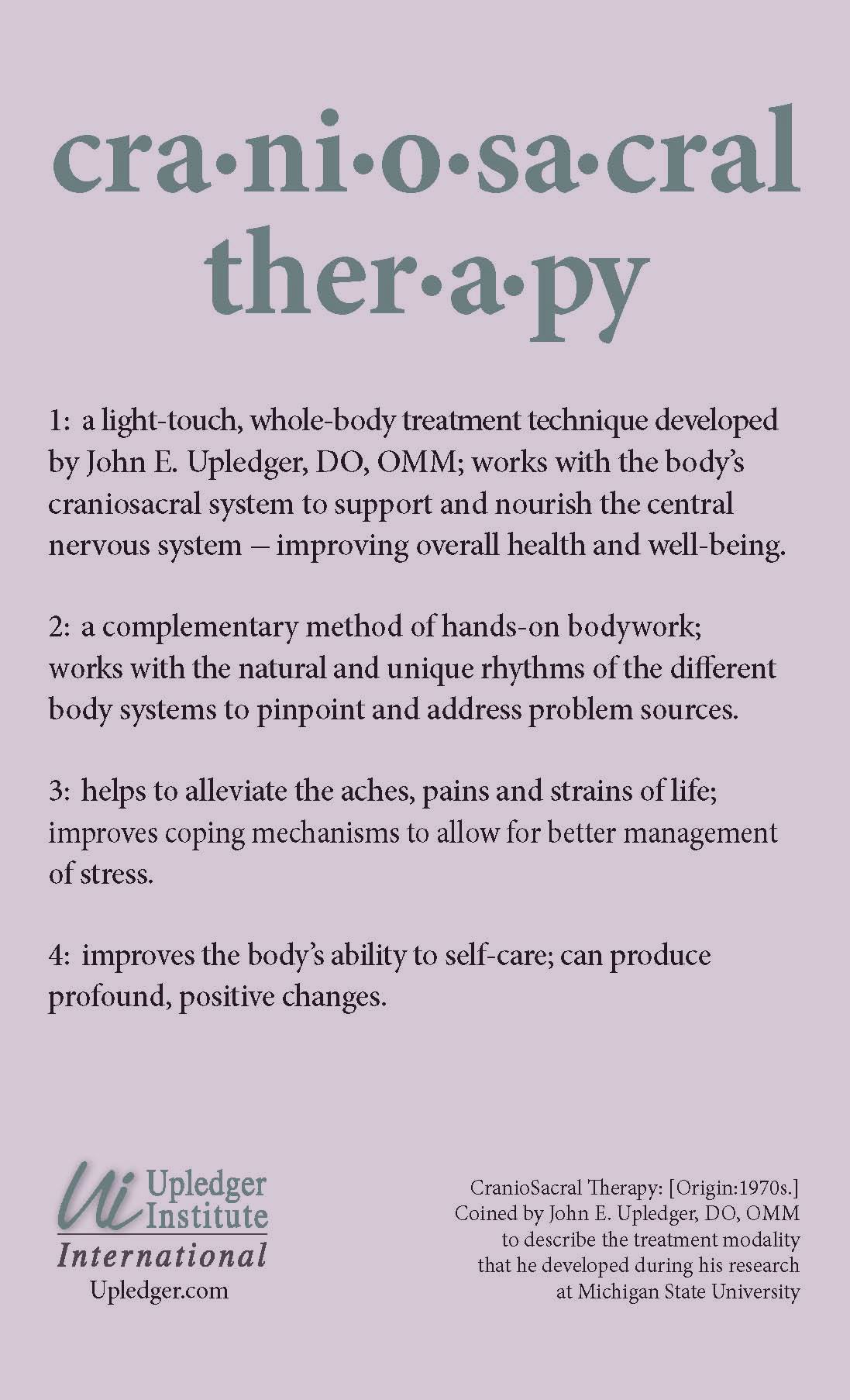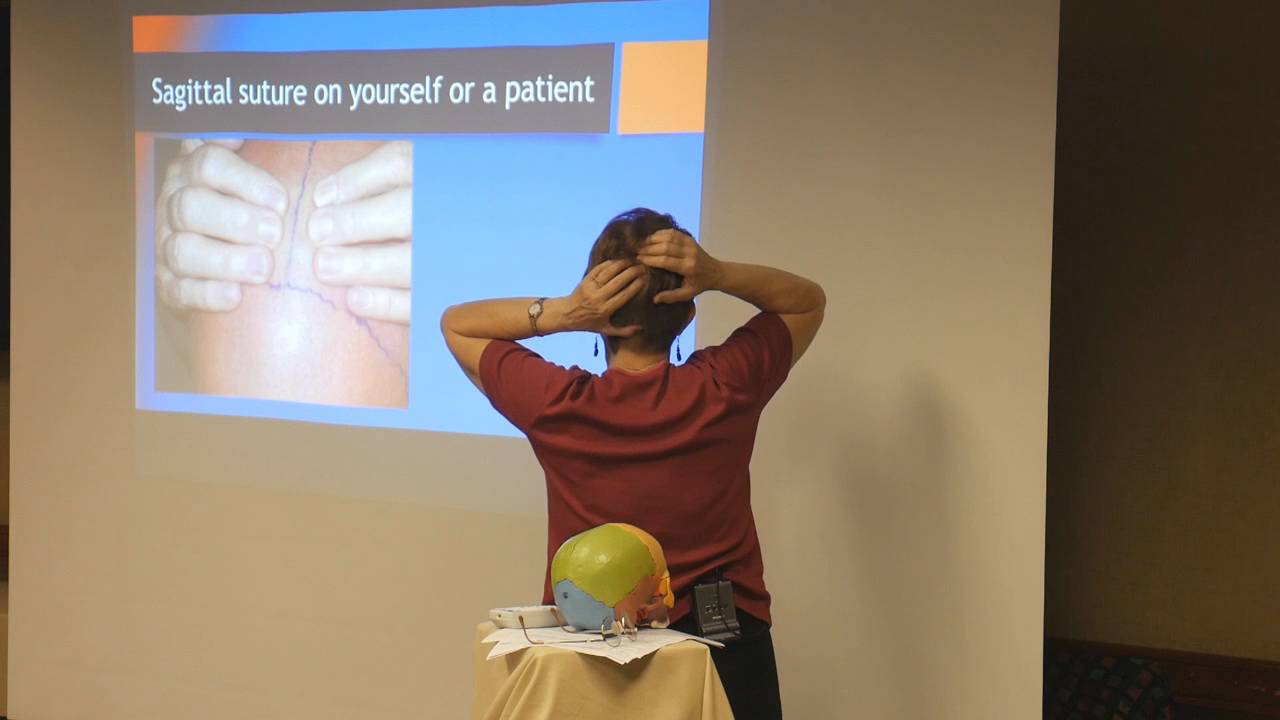To perform craniosacral therapy on yourself, find a quiet space and use gentle hand placements on your skull. Focus on deep breathing and relaxation.
Craniosacral therapy (CST) is a gentle, non-invasive method aimed at relieving tension and improving overall health. This therapy involves subtle manipulations of the skull and spine to encourage the flow of cerebrospinal fluid. Practicing CST on yourself can help alleviate stress, headaches, and muscle pain.
Begin by finding a quiet, comfortable space where you won’t be disturbed. Use your fingertips to apply light pressure on your skull, focusing on relaxation and deep breathing. This self-care technique can be a valuable addition to your wellness routine, promoting mental and physical well-being.
Introduction To Craniosacral Therapy
Craniosacral Therapy is a gentle, hands-on technique. It helps to relieve pain and stress. This therapy focuses on the soft tissues and fluids around the brain and spinal cord.
Understanding the basics of Craniosacral Therapy can help you practice it on yourself. You can feel more relaxed and balanced by learning these simple methods.
What Is Craniosacral Therapy?
Craniosacral Therapy (CST) is a type of bodywork. It uses gentle touch to feel the movement of the fluids in the craniosacral system. The craniosacral system includes the membranes and fluid that surround the brain and spinal cord.
Therapists use their hands to release tensions in this system. This helps improve overall health and well-being. You can also learn to do some basic techniques on yourself.
Benefits Of Craniosacral Therapy
- Reduces stress and tension: CST helps calm the nervous system.
- Relieves pain: It can ease headaches, neck pain, and back pain.
- Improves sleep: Many people sleep better after CST.
- Boosts overall health: Regular practice can improve overall well-being.
How To Practice Craniosacral Therapy On Yourself
- Find a quiet, comfortable place to sit or lie down.
- Close your eyes and take deep, slow breaths.
- Place your hands gently on the sides of your head.
- Focus on feeling the subtle movements of your craniosacral rhythm.
- Hold this position for a few minutes, staying relaxed.
Practice these steps regularly to experience the benefits of Craniosacral Therapy. Remember to stay gentle and patient with yourself.

Credit: www.thelist.com
Preparation For Self-therapy
Preparing for self-administered craniosacral therapy is crucial. This ensures you achieve the best results. A calm environment and the right tools are essential. Let’s explore how to get ready.
Creating A Calm Environment
Start by finding a quiet space. This space should be free of distractions. Turn off any noisy devices. Dimming the lights can also help. Create a soothing atmosphere using soft lighting. Aromatherapy can enhance relaxation.
Here’s a simple checklist for creating a calm environment:
- Choose a quiet room
- Turn off phones and electronics
- Dim the lights
- Use essential oils like lavender
- Play soft, calming music
Gathering Necessary Tools
Having the right tools is important. You will need a comfortable mat or bed. Pillows can support your head and neck. Keep a journal handy to note any observations.
Below is a table listing the necessary tools:
| Tool | Purpose |
|---|---|
| Comfortable mat or bed | Provides support during the session |
| Pillows | Supports head and neck |
| Journal | Records observations and feelings |
Here is a quick checklist for the necessary tools:
- Comfortable mat or bed
- Pillows
- Journal
By preparing well, your self-therapy session will be more effective. A calm environment and proper tools are key.
Basic Techniques
Learning basic techniques for self craniosacral therapy can be empowering. These techniques help you relax and manage stress. Let’s explore two essential methods: Breathing Exercises and Body Scanning.
Breathing Exercises
Breathing exercises are simple yet powerful. They can calm your mind and body. Here are the steps:
- Find a quiet place.
- Sit or lie down comfortably.
- Close your eyes.
- Take a deep breath in through your nose.
- Hold your breath for a few seconds.
- Exhale slowly through your mouth.
- Repeat for 5-10 minutes.
Focus on your breath. Feel the air fill your lungs and then leave. This helps release tension and promotes relaxation.
Body Scanning
Body scanning is a mindful way to check in with your body. It helps you become aware of areas of tension. Follow these steps:
- Lie down on your back.
- Close your eyes and take a few deep breaths.
- Start from your toes.
- Pay attention to any sensations.
- Slowly move your focus up your body.
- Notice your legs, hips, and abdomen.
- Continue to your chest, arms, and hands.
- Finish with your neck, face, and head.
As you scan, relax each part. Release any tension you feel. This practice helps you connect with your body and mind.

Credit: www.bowen-flow.com
Performing The Therapy
Learning how to perform craniosacral therapy on yourself can be empowering. This gentle technique helps release tension and improve overall wellbeing. Follow these steps carefully to enjoy the benefits of craniosacral therapy.
Releasing Tension In The Head
Start by finding a quiet and comfortable space. Sit or lie down in a relaxed position. Place your hands lightly on your head. Use your fingertips to gently feel the bones of your skull.
Take slow, deep breaths. Allow your hands to rest on your head. Feel for any areas of tension or tightness. Gently apply pressure to these areas. Use small, circular motions to massage them.
Pay attention to how your head feels. Continue massaging until you notice a release of tension. This may take a few minutes. Be patient and gentle with yourself.
Aligning The Spine
Next, focus on aligning your spine. Lie down on your back. Place a small pillow under your head. Keep your legs straight and your arms by your sides.
Close your eyes and take deep breaths. Visualize your spine lengthening with each breath. Feel the natural curves of your spine.
Place one hand at the base of your skull. Place the other hand at the top of your spine. Gently press down on your skull and pull up on your spine. This helps to align the vertebrae.
Hold this position for a few breaths. Feel the stretch along your spine. Slowly release and repeat a few times.
| Step | Action | Duration |
|---|---|---|
| 1 | Find a quiet space | 2 minutes |
| 2 | Place hands on head | 5 minutes |
| 3 | Feel for tension | 5 minutes |
| 4 | Align the spine | 10 minutes |
Advanced Techniques
After mastering the basics of craniosacral therapy, you can explore advanced techniques. These methods can enhance your self-therapy sessions. They focus on deeper relaxation and energy flow.
Using Visualization
Visualization is a powerful tool in craniosacral therapy. It helps in guiding your body’s healing process. Follow these steps:
- Find a quiet and comfortable place.
- Close your eyes and take deep breaths.
- Imagine a warm light flowing through your body.
- Focus on areas where you feel tension.
- Visualize the light dissolving the tension.
Repeat this process for 10-15 minutes. This practice can promote deep relaxation and healing.
Incorporating Gentle Movements
Gentle movements can enhance the effects of craniosacral therapy. These movements help release tension and improve fluid flow.
| Movement | Benefits |
|---|---|
| Neck Rotations | Relieve neck tension |
| Shoulder Rolls | Reduce shoulder stiffness |
| Spinal Twists | Enhance spinal flexibility |
Perform these movements slowly and mindfully. Listen to your body and stop if you feel pain.
Post-therapy Practices
After practicing craniosacral therapy on yourself, it’s crucial to follow some post-therapy practices. These practices help you achieve the best results and maintain your well-being. Below are some essential post-therapy practices you should consider.
Hydration And Rest
Hydration is vital after craniosacral therapy. Your body needs water to flush out toxins. Drink at least eight glasses of water throughout the day. This keeps your body hydrated and aids in the healing process.
Rest is equally important. Your body needs time to integrate the therapy. Avoid strenuous activities for at least 24 hours. Listen to your body and take naps if needed.
Journaling Your Experience
Journaling helps you track your progress and understand your body’s responses. Write down your feelings and any changes you notice. This can help you identify patterns and triggers.
Create a journal entry after each session. Note the date, duration, and techniques used. Also, include any physical or emotional changes you experience.
| Post-Therapy Practice | Details |
|---|---|
| Hydration | Drink at least 8 glasses of water. |
| Rest | Avoid strenuous activities for 24 hours. |
| Journaling | Track your feelings and changes. |
- Hydration: Keeps your body hydrated and flushes out toxins.
- Rest: Allows your body to integrate the therapy.
- Journaling: Helps track progress and identify patterns.
- Drink water regularly.
- Take naps if needed.
- Write journal entries after each session.
Common Mistakes To Avoid
Practicing Craniosacral Therapy on yourself can provide many benefits. Yet, mistakes can happen. Avoiding common errors ensures the therapy is effective and safe.
Overexertion
Overexertion is a frequent mistake in self-administered Craniosacral Therapy. This therapy involves gentle touch and subtle movements. Using too much force can cause harm.
Follow these tips to avoid overexertion:
- Use a light touch, no more than the weight of a nickel.
- Focus on gentle, slow movements.
- Listen to your body’s feedback and adjust pressure accordingly.
Ignoring Discomfort
Ignoring discomfort is another common mistake. Discomfort signals that something is wrong. Pay attention to any pain or discomfort during the session.
Here’s how to address discomfort:
- Stop immediately if you feel pain.
- Reassess your technique and pressure.
- Consult a professional if discomfort persists.
| Common Mistake | Impact | Solution |
|---|---|---|
| Overexertion | Can cause harm | Use gentle touch |
| Ignoring Discomfort | Pain or injury | Stop and reassess |
Avoid these mistakes to ensure your Craniosacral Therapy sessions are beneficial and safe.
When To Seek Professional Help
Performing craniosacral therapy on yourself can be beneficial. But knowing when to seek professional help is crucial. This ensures you get the best care and avoid any complications.
Identifying Serious Issues
Sometimes, self-treatment isn’t enough. Look for these signs:
- Severe or persistent headaches
- Dizziness or balance problems
- Intense neck or back pain
- Unexplained numbness or tingling
- Difficulty concentrating or confusion
If you notice any of these, consult a professional. These could be signs of more serious issues. Professional help ensures proper diagnosis and treatment.
Finding A Qualified Therapist
Choosing the right therapist is essential. Here are steps to find one:
- Check their credentials and certifications.
- Read reviews from other patients.
- Ask for recommendations from friends or family.
- Ensure they specialize in craniosacral therapy.
- Verify their experience and training.
These steps help you find a qualified therapist. A good therapist can provide safe and effective treatment. Your health and safety should always come first.

Credit: wonderscounseling.com
Frequently Asked Questions
Can You Perform Craniosacral Therapy On Yourself?
Performing craniosacral therapy on yourself is not recommended. A trained therapist ensures proper technique and safety. Seek professional help for effective results.
Do It Yourself Craniosacral Therapy?
Do-it-yourself craniosacral therapy involves gentle touch on the skull and spine to relieve tension. Use light pressure and deep breathing. Always consult a professional for proper guidance.
What Are The Three Types Of Craniosacral Therapy?
The three types of craniosacral therapy are Upledger Craniosacral Therapy, Biodynamic Craniosacral Therapy, and Visionary Craniosacral Work.
How To Perform Craniosacral Therapy?
To perform craniosacral therapy, gently place hands on the patient’s skull. Apply light pressure to release tension. Focus on the cranial rhythm. Use subtle movements to adjust the spine and sacrum. Ensure a calm and quiet environment for best results.
Conclusion
Practicing craniosacral therapy on yourself can promote relaxation and well-being. Use gentle techniques and listen to your body. Regular practice can help improve overall health and reduce stress. Always consult a healthcare professional for guidance. Start your journey to self-healing today and experience the benefits firsthand.



